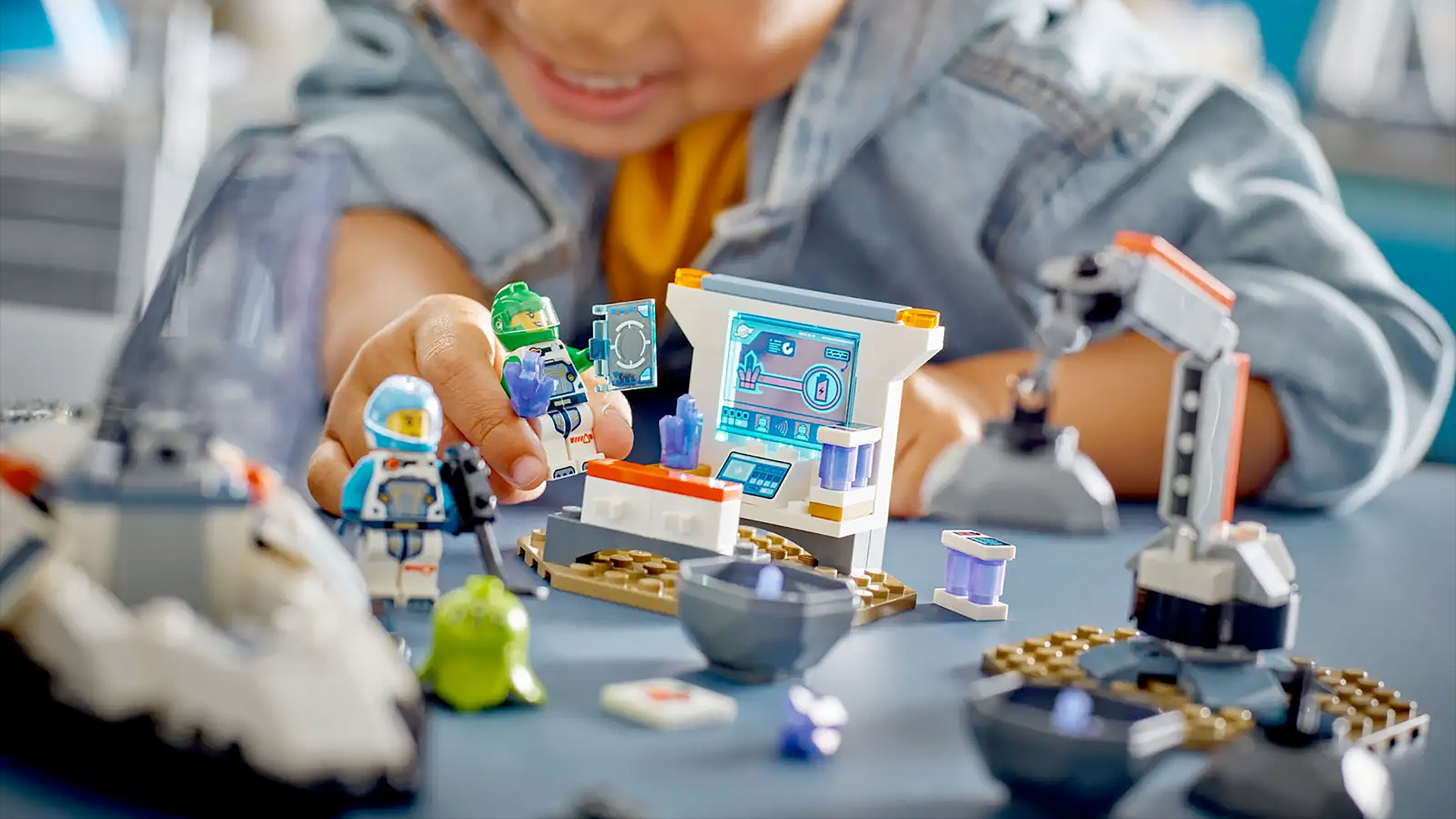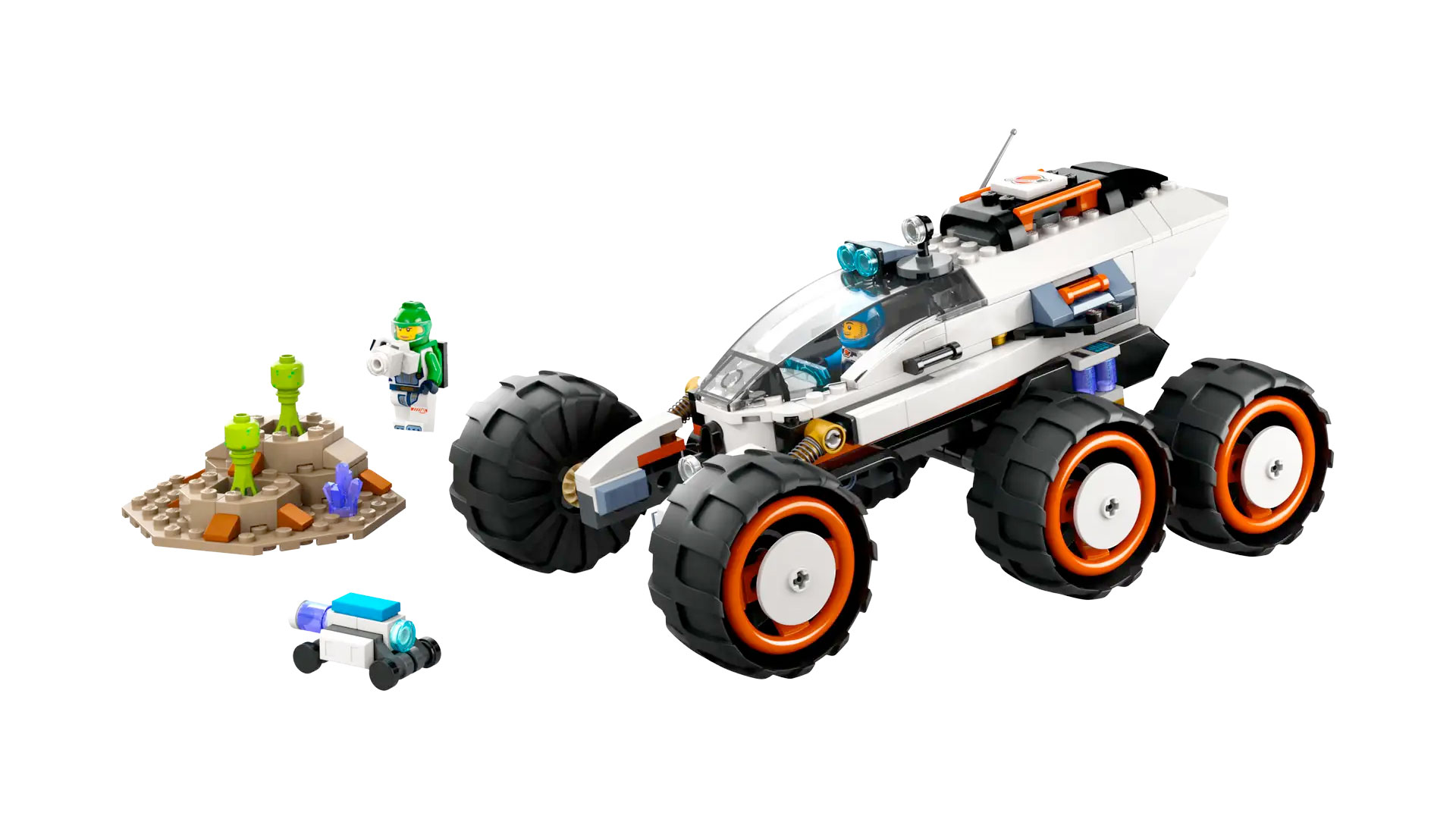
Dan sat there in the room watching the kids playing with a space explorer rover that featured six robust tires perfect for navigating imagined planetary surfaces. Only, not once during the 30-minute "play test" did the rover ever use its wheels.
Instead, the children "zoomed" the vehicle through the air, up and down, only briefly "landing" on the table to pick up aliens, storing them in the rover's rear compartment before taking back off.
Talking with the kids afterwards, Dan asked what they liked about the set. "Oh, I really liked the car with the six wheels," said one the kids.
"Yeah, but you didn't use the wheels. It flew everywhere," replied Dan. "So does it need wings then to fly? Do we need to change the wheels and put wings on to make it a spaceship?"
"Don't change a thing," said the kids."Keep it exactly the same. We love this suspension."
"But we need more aliens," they added.
Related: The search for alien life (reference)

That feedback and other sessions like it, together with the results of a new global study, has begun to reshape — literally — the Lego Group's products and its designers' perceptions as to what draws children to space. This year, the Denmark-based toy company has used "space" as an overarching theme across all of its different product lines, a first-of-its-kind approach that has resulted in more than two dozen new space sets being released this year thus far.
"We've made some very cool products and launched them this year for space," said Dan Meehan, Lego's senior design manager and the creative lead for the new space sets, in an interview with Space.com. "I'm very proud of what the teams have done."
Based on the company's research, Lego found that 77% of kids want to travel to space and 86% are interested in finding new planets, stars and galaxies. Additionally, more than 3 in 5 children believe there are aliens in space, and 64% want to meet one.
"I was really excited to see what we got back," said Meehan of the survey. "The STEM [science, technology, engineering and math] side — that sort of space enthusiasts side, the core space kids — still exist. They, like me, are really into everything about space."
"But there is a huge number, a much bigger number, of kids that love space for storytelling. And that's not storytelling in the sense of movies and TV shows, but storytelling in terms of like, space is an endless playground for imagination, and the possibilities are endless. We call them the 'space storytellers' because they are using space as a canvas to be creative and imaginative. And that challenged us with the portfolio of the products that you now see on the shelves to really push them a little bit further," Meehan told Space.com.
Related: Best Lego space sets 2024: NASA sets, spaceships and more

An example of this was with this year's Lego City Space sets. In recent years, Lego has worked with NASA to style its space-themed Lego City products after the agency's Artemis moon missions, grounding them in real life.
"This time around, when we did Lego Space City, we pushed the minifigure further from here as it's ever been, and the same with the minidolls in Lego Friends," Meehan said. "We were trying to look at, What if the Lego City team were exploring an unknown planet? We didn't name the planet or say which solar system. They are somewhere imaginary, they're somewhere new. What would they do?"
"Because this is what kids were telling us," he said. "This idea of discovering life and alien life and different galaxies."
What Lego found is, even if they give kids more realistic, accurate-to-real-life space vehicles to build and play with, there is no stop to their creativity and imaginations. In another activity, the Lego Group invited a group of young fans from around the world to New York City to build their own vision for the future of space travel.
The company then surprised the kids by adapting their designs into UPOs, or "Unidentified Playing Objects," which took to the sky as part of a drone show over the Manhattan skyline.
The kids, ranging in age from six to 13, did not build traditional rockets or spacecraft but rather a space bed powered by butterfly wings (complete with a snack drawer for long journeys); a turtle spaceship that walks on the moon; a dog spaceship with 360-degree windows; and a dinosaur with a jetpack, among other designs.
"Stick in this room 10 Lego designers for a week and we're still not going to come up with a bed with butterfly wings with a drawer for snacks as a form of space travel," said Meehan. "We're going to be confined by aerodynamics, helmets and large support systems. Kids are just like, 'I want to ride on a dinosaur with a jetpack."
"The idea is to inspire kids that space is this endless playground for their imagination," he said. "They can then harness their creativity to really come up with what the future of space travel could be, because we just don't know, right?"







